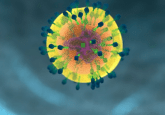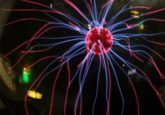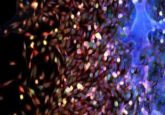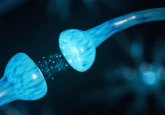A kinder and gentler electroporation

Researchers have developed a soft electroporation method for adherent mammalian cells using novel hollow nanoelectrodes.

Electroporation is a well-established method for delivering exogenous molecules into the cytoplasm of cultured cells. A train of electrical pulses is applied to the cells in culture, causing the formation of very small pores in the cell membrane that permit access to the cytoplasm for molecules such as nucleic acids, proteins, and drugs.
Traditional electroporation uses large, flat electrodes spaced millimeters apart to apply a high electrical field to cells in a culture medium; however, even with careful optimization there can be significant levels of cell death when the pores become too large or stay open too long.
Recently, researchers improved electroporation of adherent cells using hollow nanostructures (nanostraws or nanochannels) that have a sharp, nanometer-sized tip, which concentrates the applied electric field and greatly reduces the required potential from hundreds of volts to several volts. In these methods, cells are grown on the upper side of a membrane that separates two microfluidic chambers and contains nanochannels connecting the chambers. Application of electrical pulses between the chambers causes electroporation of molecules from the solution in the underlying chamber through the nanochannels into the cells resting on the upper surface of the membrane.
There are some potential problems with this approach: molecules in the cell culture medium in the upper chamber may be unintentionally electroporated into the cells, and while the voltage used can be fairly low (6 V to 20 V), it is still high enough to cause electrolysis of water, generating reactive oxygen species (ROS) that could damage the cells. Now, researchers led by Michele Dipalo and Francesco De Angelis at the Italian Institute of Technology present a nanochannel-based electroporation method that overcomes these issues.
The team formed 3-D hollow nanochannels (shaped like circular chimneys) onto a thin silicon nitride membrane using a focused ion beam, which allowed precise control when shaping and placing the nanochannels. They next coated the membrane and nanochannels with gold to provide electrical conductivity and biocompatibility for cell growth. The final step was to cover the gold-coated surface with an insulating layer of the epoxy polymer SU8 such that only the tips of the nanochannels were protruding to form hollow nanoelectrodes.
These nanoelectrodes are the chief innovation of this platform, as they act as an electrode while also allowing passage of the desired molecules from the lower chamber during electroporation when a pulse train is applied between the gold layer and the upper chamber. The insulating layer guarantees that electroporation only occurs where the tips of the nanochannels contact the cells, while the rest of the cell membrane tightly adheres to the SU8 layer, preventing the passage of molecules from the cell culture medium into the nanochannels. The very small size of the tips allows an intense electrical field to form even at voltages as low as 1.5 V, preventing ROS formation.
Cells grew on top of the nanoelectrodes without any change in cell viability. Using a 10-second pulse train at 20 kHz with a 2 V amplitude, 80% of NIH-3T3 cells lying on top of the nanoelectrode arrays were electroporated, with a cell viability of >98%, and the team could electroporate a hard-to-deliver cell line such as HL-1 cardiomyocytes. By appropriate spacing of the nanoelectrode array, it was possible to electroporate single cells out of a group of cells growing on the membrane. This electroporation method will therefore allow the gentle, controlled, and optimized delivery of molecules to ordered groups of adherent tissue culture cells.





